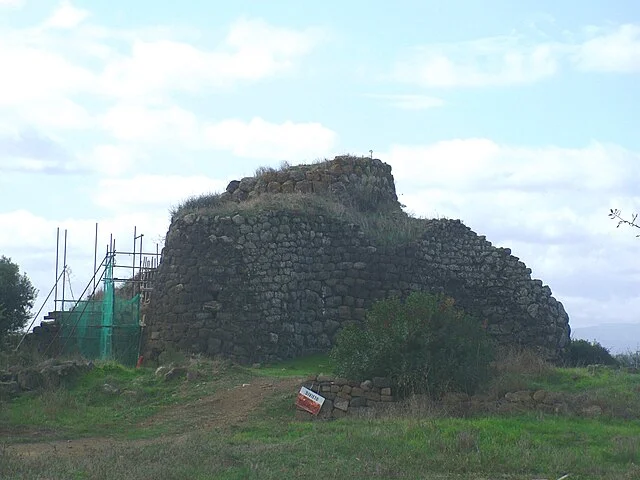The Nuraghe Iloi is an archaeological structure located in Sedilo, Sardinia, Italy. Built during the Bronze Age, Nuraghe Iloi is one of the many “nuraghi” structures that define the prehistoric landscape of Sardinia. These impressive stone structures were erected by the Nuragic civilization, which flourished on the island from approximately 1800 BC to 500 BC. The site offers insight into the architectural, social, and religious practices of this ancient civilization.
Get your dose of History via Email
Architectural Features of Nuraghe Iloi
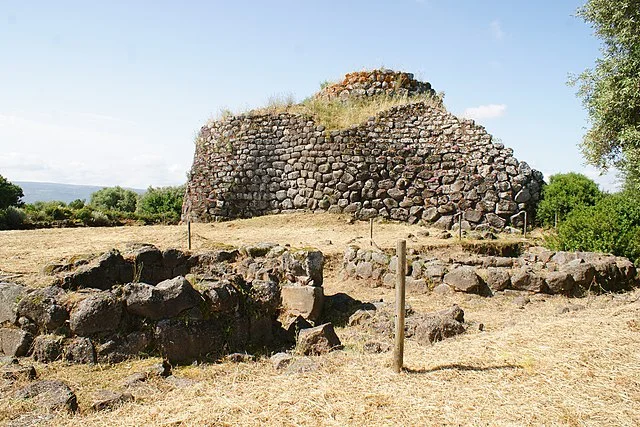
Nuraghe Iloi is a complex nuraghe with a central tower, additional side towers, and a surrounding village. Like most nuraghi, it was built using large, unworked stones carefully arranged without mortar. The main tower is a truncated cone shape, a defining feature of Sardinian nuraghi. The walls of the main tower measure several meters thick, providing stability and a secure interior.
Inside the main tower, there are multiple chambers stacked vertically. These chambers are linked by a narrow spiral staircase. The structure reaches a height of about 10 meters, showcasing the engineering skills of the Nuragic builders. The secondary towers are smaller but connected to the main structure through thick walls, forming a bastion-like complex. This multi-tower design suggests a strategic purpose, likely intended for defense or surveillance.
Function and Purpose
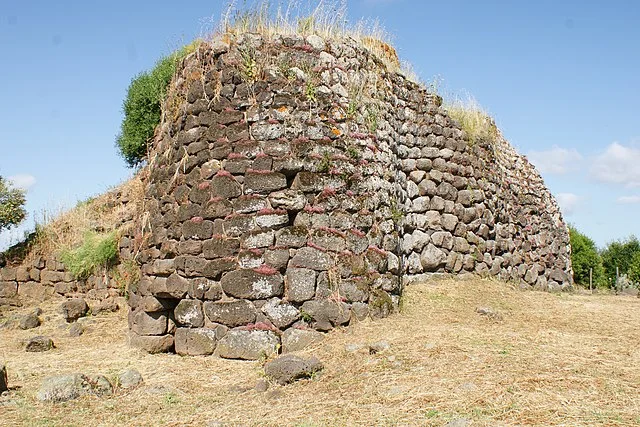
Scholars continue to debate the exact function of nuraghi. Some suggest that these towers served as fortifications, while others believe they were symbols of communal power or places of worship. In the case of Nuraghe Iloi, its location and defensive features support the theory of a military purpose. However, evidence also points to its role as a social and religious center.
The nuraghe’s proximity to a surrounding village, as well as the presence of additional architectural elements, indicates that the site held communal significance. Excavations have revealed items such as pottery, tools, and remnants of metalwork, all suggesting that Nuraghe Iloi served as a hub for both everyday life and ritual activities. These findings reflect a multi-purpose structure that catered to various aspects of Nuragic society.
Artifacts and Excavations
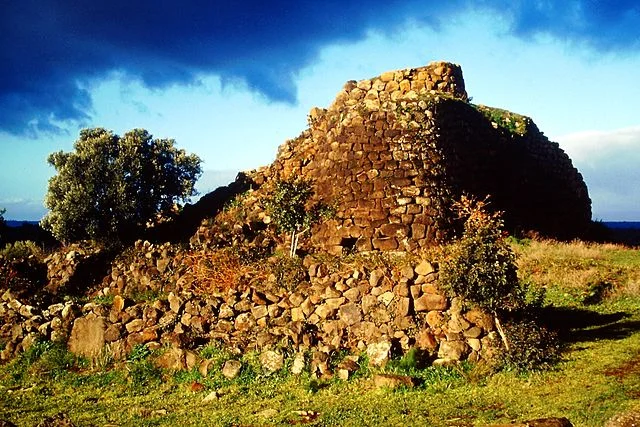
Archaeologists have conducted several excavations at Nuraghe Iloi, uncovering a range of artifacts. Pottery fragments found on the site date from different periods, showing that Nuraghe Iloi remained in use well into the Iron Age. These ceramics include simple, functional pieces, as well as finely decorated pottery, indicating a level of artistic development within the Nuragic culture.
Other significant finds include bronze tools, weapons, and ornaments. Bronze was a valuable material in the Nuragic society, highlighting the technological advancement of the culture during this era. The presence of weapons like arrowheads and daggers suggests that the site was used for defense or warfare preparation.
One of the most intriguing discoveries at Nuraghe Iloi is a small number of human remains. These remains suggest that certain areas of the site may have been used for funerary practices, a common trait in Nuragic culture. This reinforces the theory that nuraghi held both ceremonial and residential functions.
Religious and Cultural Significance
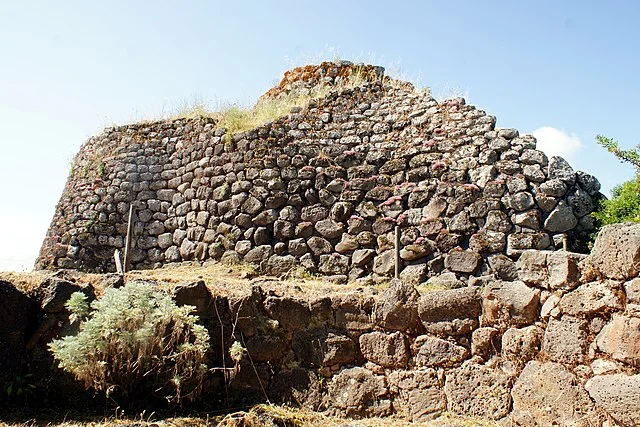
The Nuragic civilization is known for its rich spiritual beliefs, often expressed through monumental architecture like nuraghi and sacred wells. Nuraghe Iloi may have also served a religious role, indicated by the artifacts found and its central location within the settlement. Ritual objects, such as bronze figurines depicting animals and human figures, have been discovered in Sardinian nuraghi, suggesting that they played a role in religious ceremonies.
The layout of Nuraghe Iloi, with its complex architecture and carefully designed chambers, may reflect its ceremonial importance. Archaeologists believe that certain sections of the nuraghe were dedicated to specific rituals, perhaps related to ancestor worship or other religious practices. This blend of military, social, and religious functions illustrates the central role of nuraghi in Nuragic society.
Conservation and Modern Study
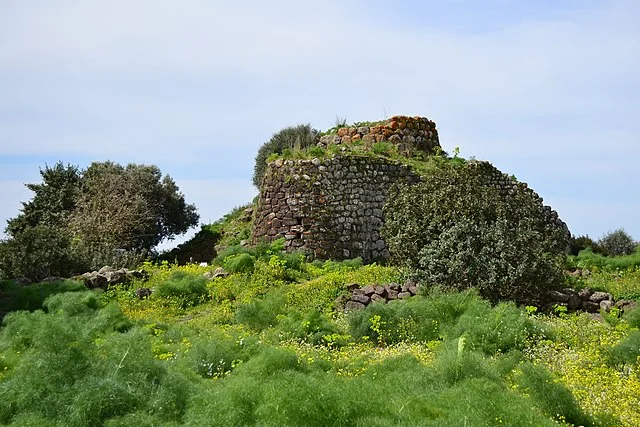
Nuraghe Iloi remains an important site for both researchers and visitors interested in prehistoric Sardinia. Its preservation is essential to understanding the Nuragic civilization and the broader prehistory of the Mediterranean. Conservation efforts focus on stabilizing the stone structures and protecting the site from erosion and modern interference.
Recent studies employ advanced technologies like 3D mapping and laser scanning to analyze Nuraghe Iloi’s architectural features. These methods allow archaeologists to gather more detailed information about construction techniques, architectural planning, and the site’s overall condition. Continued excavation and research efforts aim to clarify the role of Nuraghe Iloi within the Nuragic civilization and provide further insight into the ancient people who inhabited the region.
Conclusion
Nuraghe Iloi is a key example of the complex nuraghi structures that characterize the Nuragic civilization of Sardinia. Its architecture, artifacts, and strategic location reveal much about the lives of the people who built and used it. The blend of defensive, social, and religious functions underscores the multifaceted nature of Nuragic society. As research continues, Nuraghe Iloi remains an essential site for understanding the Bronze Age in Sardinia and the cultural legacy of the island’s ancient inhabitants.
Source:

